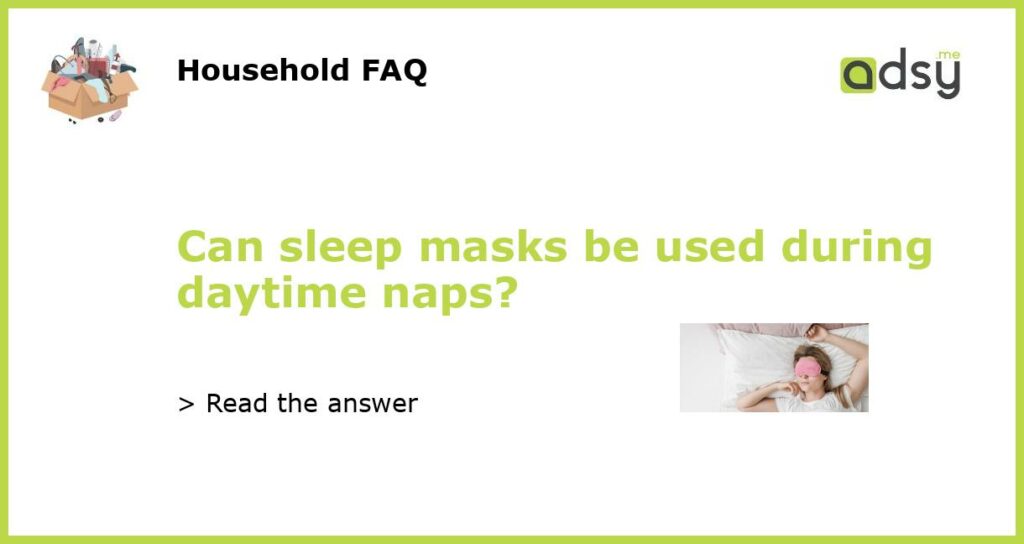Understanding Sleep Masks
Sleep masks have long been a popular tool for those struggling with sleep disruptions. These masks are typically made of light-blocking materials and are designed to be worn over the eyes while sleeping. By blocking out external light, sleep masks can create a darker environment, which can promote better sleep.
The Purpose of Sleep Masks
Sleep masks are commonly used by individuals who experience difficulty falling asleep or staying asleep due to external factors such as light pollution. By wearing a sleep mask, these individuals can effectively block out light and create a darker environment, allowing them to sleep more soundly.
Using Sleep Masks During Daytime Naps
While sleep masks are typically associated with nighttime sleep, they can also be used during daytime naps. Daytime napping can be beneficial for individuals who need a quick energy boost or are working irregular hours. However, many individuals struggle to fall asleep during daylight hours due to the presence of natural light. Using a sleep mask can help create a darker environment and promote more restful napping.
When using a sleep mask during a daytime nap, it is important to ensure that the mask fits comfortably and securely over the eyes. It should effectively block out all light, allowing the individual to fully relax and rest. In addition, individuals should aim to nap in a quiet and comfortable environment to further enhance the quality of their nap.
The Benefits of Using Sleep Masks During Daytime Naps
Using a sleep mask during daytime naps can offer several benefits. Firstly, it can help individuals fall asleep faster by blocking out light, which is often a major sleep disruptor during the day. Secondly, sleep masks can improve the quality of sleep by ensuring the environment is dark and conducive to rest. Lastly, using a sleep mask can help regulate the body’s internal clock and promote a consistent sleep-wake cycle.
Additionally, sleep masks can be particularly helpful for individuals who work night shifts or have irregular sleep schedules. These individuals often struggle to sleep during daylight hours due to the presence of natural light. By wearing a sleep mask, they can create a dark environment that mimics nighttime conditions and enhance their ability to fall asleep and maintain sleep.
Considerations for Using Sleep Masks During Daytime Naps
While sleep masks can be beneficial for daytime napping, there are a few considerations to keep in mind. It is important to choose a sleep mask that is comfortable and does not cause pressure or discomfort on the eyes. The material of the mask should be soft and breathable to prevent irritation. Additionally, it is important to maintain a consistent sleep schedule and not rely solely on sleep masks to regulate sleep patterns.
Individuals who are sensitive to light or have pre-existing sleep disorders should consult with a healthcare professional before using a sleep mask. It is important to address any underlying sleep issues and determine if a sleep mask is a suitable solution for improving sleep.
In conclusion
While sleep masks are commonly associated with nighttime sleep, they can also be used during daytime naps to block out light and create a conducive environment for rest. Using a sleep mask during daytime naps can help individuals fall asleep faster, improve sleep quality, and regulate the body’s internal clock. However, it is important to choose a comfortable sleep mask and consult with a healthcare professional if needed. By utilizing sleep masks during daytime naps, individuals can enhance their ability to nap effectively and reap the benefits of restorative daytime sleep.






